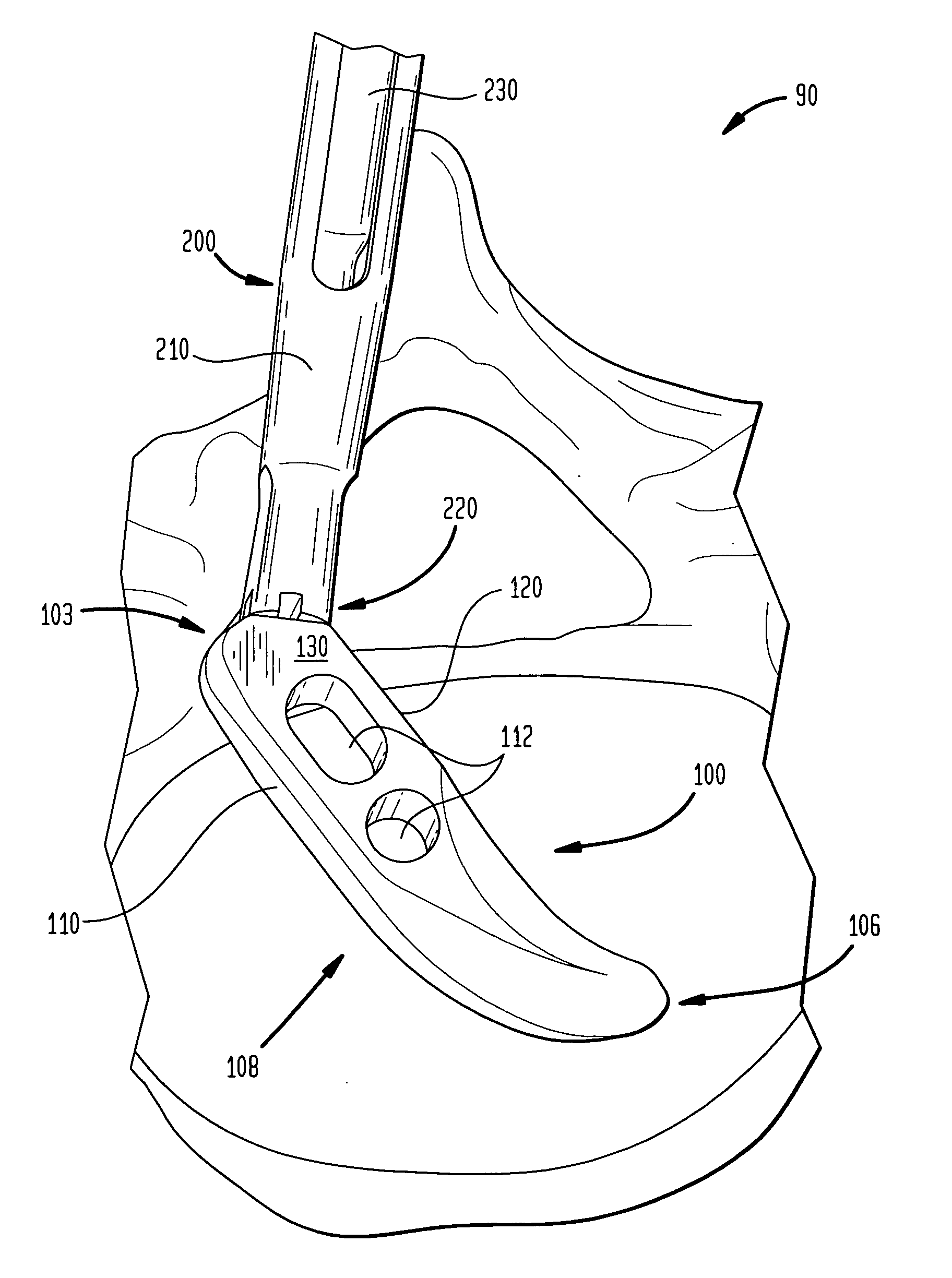Spinal implant apparatus and methods
a technology of spinal implants and implants, applied in the field of spinal implants, can solve the problems of abnormal movement, less than desirable coronal and/or sagittal alignment of the spine, thinning of the disc, etc., and achieve the effects of improving success rate, speeding recovery, and reducing patient risk
- Summary
- Abstract
- Description
- Claims
- Application Information
AI Technical Summary
Benefits of technology
Problems solved by technology
Method used
Image
Examples
Embodiment Construction
[0055]Referring to FIG. 4, a spinal implant apparatus 90 of the present invention includes a prosthetic intervertebral spacer 100 and a positioning tool 200 for fine and minimally invasive manipulation of spacer 100 within a patient in need of lumbar interbody fusion (“LIF”) surgery. Apparatus 90 allows spacer 100 to be easily and consistently positioned to a desirable location 36 as represented in FIG. 5, where desirable location 36 is near the anterior region 35 of inferior vertebra 30 (a similar desirable location located near the anterior region of superior vertebra 20). Therefore, spacer 100 is shown in FIG. 5 as being positioned substantially between the upper surface of cortical rim 33 of inferior vertebra 30 and the lower surface of the cortical rim of superior vertebra 20. Positioned in desirable location 36, spacer 100 is maximally supported by cortical rim 33 (and a like cortical rim of superior vertebra 20), and spacer 100 better promotes alignment and lordosis than it w...
PUM
 Login to View More
Login to View More Abstract
Description
Claims
Application Information
 Login to View More
Login to View More - R&D
- Intellectual Property
- Life Sciences
- Materials
- Tech Scout
- Unparalleled Data Quality
- Higher Quality Content
- 60% Fewer Hallucinations
Browse by: Latest US Patents, China's latest patents, Technical Efficacy Thesaurus, Application Domain, Technology Topic, Popular Technical Reports.
© 2025 PatSnap. All rights reserved.Legal|Privacy policy|Modern Slavery Act Transparency Statement|Sitemap|About US| Contact US: help@patsnap.com



